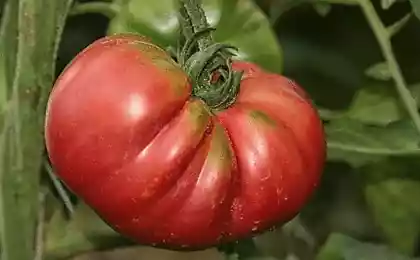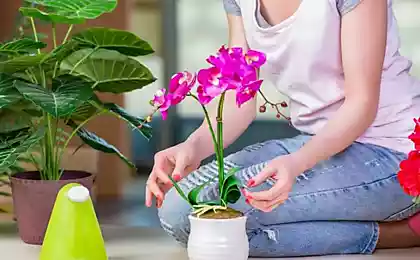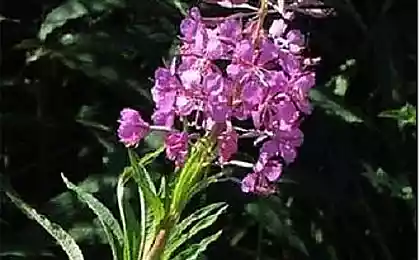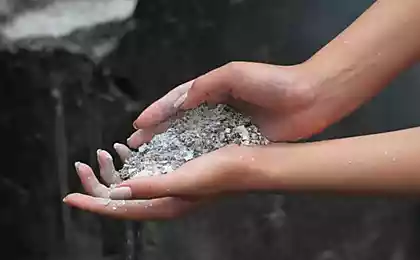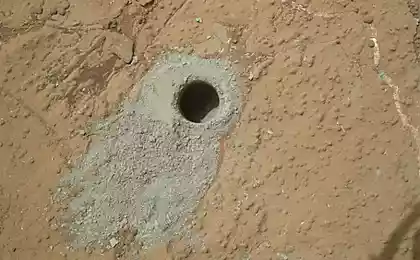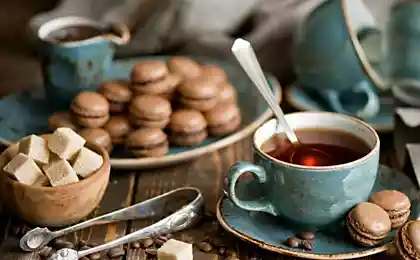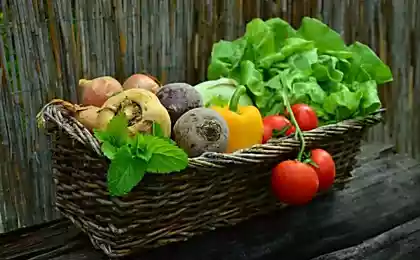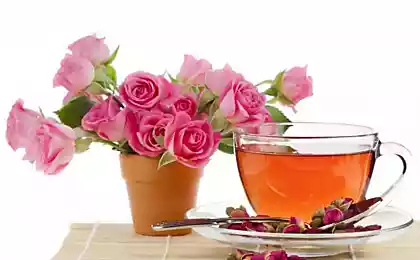582
What is Aerated compost tea (academic hours)
For the most lush and beautiful flowers, the most productive and earliest tomatoes I learned how to prepare the infusion of beneficial soil microorganisms, learned the secrets of applying the "healing elixir" of its own production under the title academic hours. Share your experience of its practical application to all.
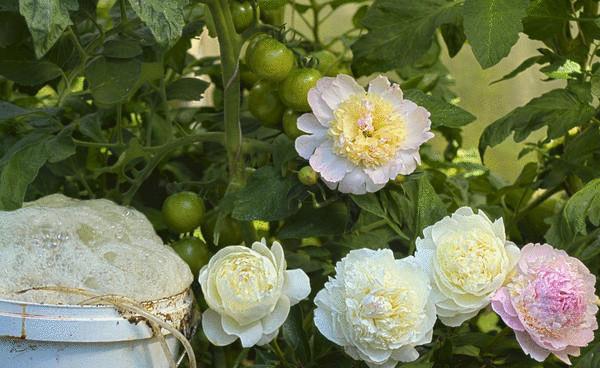
Let's start with the theory First, be patient — understand the basics of soil Microbiology, which previously the school did not teach. We will begin to understand practical examples.
How to work EM-the drugs Many have tried to use microbial preparations Baikal EM-1 and "the Shining." I have experience using them in the spring to prepare drugs, sprayed the soil (or rather, mostly — organic, which it mulch).
For what? I understand that the natives of my soil still asleep. They earn by the end of may. And microorganisms are propagated and activated in the preparation of EM products, earn in 3-5 days — will begin to decompose organics and to give nutrition to plants. There will be a new momentum for the processing of organics. Themselves made EM quickly become food for predatory natives, and the wave of food chains will sweep through the area, producing food for the roots of my plants. I'll see how the plants came to life and started to grow.
Delicious cucumbers ripen in June, if you put academic hours:
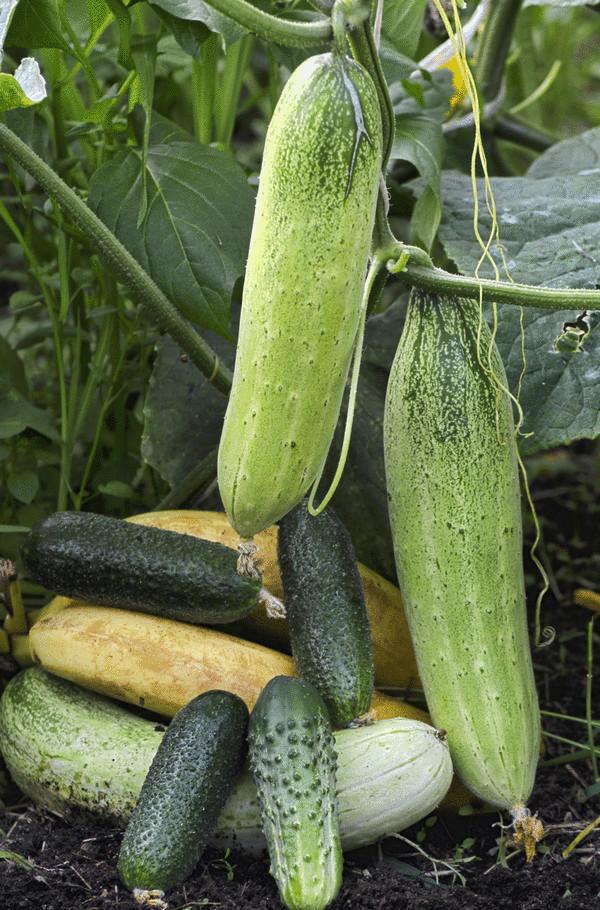
This is a revival of growth momentum seen by many gardeners, but because buying EM-preparations.
But the momentum lasts long. The plants are constantly well grown, they should be given a new portion of organic matter often stimulate or Baikal EM. This uh-drugs are fundamentally different from academic hours.
How are herbal tinctures Another example. Many have used infusions of herbs. Recently got a recommendation to aerate them, to avoid the putrid smell. I've done that. But with the understanding of the biological processes in the soil.
Weeds contain readily available to soil fungi, and microbes of food — carbohydrates and proteins. We just make weed protein and carbohydrate extraction. The same thing happens if you push a crust of bread or to dissolve the old jam: we make sugar and the microorganisms that rapidly begin to decompose unavailable soil organic matter natives and create impulse food chains — that is, stimulate accelerated decomposition of coarse organic matter available to the roots in the compost.
Unusually roses grow wild, if you spray them academic hours:
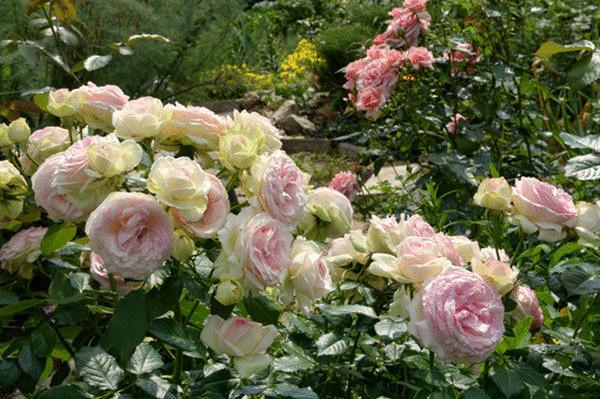
What happens in the soil? Another example. More important. If you are from year to year, constantly make rich loose organic carbon in the soil are changing consumers of this material. Changing native flora, appear more active the bacteria are, but not limited to: developing and fungi, amoeba, and nematodes, and algae, followed by earthworms and so on... And these chain of microzine be very stable and user-friendly for cultivated plants.
On such a soil your plants not just consume ready-made food elements, and form a new symbiotic rhizosphere bacteria, friendly bacteria are surrounded by a dense ring of roots and do not allow harmful germs.
I mean, I brought you to the idea: the goal is not to make the soil preparations with microorganisms; our task is to create conditions so that the plants themselves have formed friendly flora.
Potted plants also love feeding academic hours:

The solution of the problem — academic hours So now I don't buy commercial preparations and just take a little bit of soil (organic matter) with the "trash heap" — a heap of old compost, overgrown with weeds. Only old aged compost contains symbiotic bacteria and fungi, amoebas, nematodes, algae need quality and biodiversity.
This compost is placed in water with malt and leak air. All useful local -homegrown, native to my garden beds — flora multiplies millions of times. And immediately before she died, pour it on your garden. Here's biota will definitely take root, will supersede all soil pathogenic fungi and bacteria and enrich the rhizosphere of cultivated plants.
So it turns out academic hours. Aerate the Compost — get the infusion, similar in color to the Tea
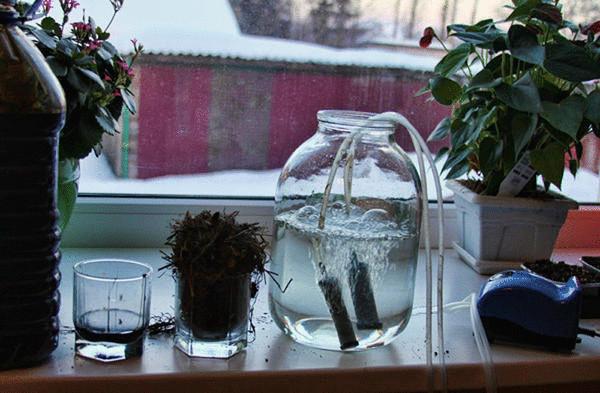
How to make good compost In any garden or beside it is the corners where you fold the garbage, and the tops of your plants. There is growing nettle, pigweed and other weeds. If this junk pile there 5 years, there has emerged a natural, rich in its diversity of the microbial community.
Put your bags of manure, or leaves, or cut the weeds; just add the rest of the table — bread, bones; in a pinch, buy some cheap fodder of the bran. This will attract worms from the surrounding soil and your organic matter will be filled with the desired living entities.
How to correct compost to prepare academic hours Now, I will share the more important secrets and tell me how these billions of beneficial microorganisms from the compost translate into a solution, many times to multiply and spill (or spray) them their plants.
Need water without chlorine , for example, bucket 10 liters. Liter bottle compost. On 10 l of water I should add 50-100 grams of molasses, or malt extract (sold in all stores). You can push a few crusts of bread, or add the remnants of jam, you can jam yourself from the waste of red beet. Carbohydrates need to quickly propagate of microbes .
Our beneficial micro-organisms in the compost live in a well-aerated environment. If placed in a solution of malt, they quickly die, rot and be eaten by putrefactive microbes. So as soon as you compost is placed in a solution, you need to immediately start the compressor and allow air. 2 liters of water will fit any aquarium pumps, 10 l is the most powerful of those that are on sale.
So, after we placed the compost into a bucket of water with the malt, and included aeration, microorganisms and various substances (organic and inorganic, soluble and insoluble) fall into water, saturated with oxygen. In these conditions, they begin to actively proliferate , especially those microorganisms which are aerobic (that is, able to live and reproduce in conditions of high oxygen content in the water). Anaerobic microorganisms in such conditions either die or pass into a state of sleep.
Depending on the kind of feed additives (malt, jam or tincture weed grasses) in the infusion begins to develop a certain group of microorganisms. In the process of reproduction they use as a food additive that is actively consuming oxygen. Global experience has shown that if you take just one molasses that reproduce only useful microorganisms, putrefactive all die.
At this stage particularly important to control the content of oxygen in the water. When you disconnect the aeration already after 30 minutes the oxygen level in water decreases so that the mass death of aerobic organisms and anaerobic breeding is highly undesirable for our purposes. In most cases, such solution is not amenable to correction. A spoiled solution can not be used!
On average, at ambient temperature +20 degrees Celsius cycle preparation of microbial infusion lasts about a day (i.e. 24 hours). At a temperature of +30 degree cycle lasts about 15-18 hours. If the process goes too long, the microorganisms run out of nutrients and cease to multiply, with many groups simply disappear, becoming food for other groups.
How to determine whether the preparation of infusion? The drop in the level of oxygen can be easily determined by smell. Good microbial infusion has a pleasant smell of fresh earth. One in which began to proliferate anaerobic microorganisms, becomes unpleasant (rotting) smell.
The infusion must be applied for no more than 4 hours after cooking. The shelf life depends on the ambient temperature: the higher it is, the less is stored the finished product. Given the time needed for delivery to the place of use, sometimes you have to use the infusion directly "from wheels".
This is the difference between its microbial infusion and store EM-preparations. The scale of the garden we may keep alive that we need microorganisms, in industrial settings retain academic hours in expensive aerators. Each microbial infusion made with his own hands, itself is unique – it is something individual, creative; to combine and create as you like.
Indicator of the quality of academic hours — foam and the smell of bread:

As I apply academic hours in the fall garden and the garden I mulched with organic matter obtained from their animals. If from the end of September there are warm days, I sprayed the mulch infusion. But the main thing is to spray all the soil with mulch in early spring, when at the end of April the soil begins to warm up. This you the temperature in the root layer of plants will increase by 5-10 degrees, and spring in your garden will come 2 weeks earlier and fall is 2 weeks later.
Of course, the infusion before pouring into the sprayer it is necessary to filter, but through a large sieveto nematodes and amoebas in the solution was. And so we should not spray the small droplets and grow larger.
The garden and the soil, and the foliage — spray 3-4 times per season. Trying to catch the rain: microbes should penetrate into the soil.The garden, you can spray frequently, up to two times a month.
It is necessary to remember that you make along with the solution is not only effective micro-organisms which will process organic material and make it available for plant nutrition, and more importantly, stimulate the growth of roots and create a very active rhizosphere in the rhizosphere. You help plants engage in symbiosis with microorganisms, symbiotic fungi, by increasing the secretion of carbohydrates by the roots.
Spraying foliage also benefits the plants. The film of microbes-anaerobes protect the leaves from disease, and a huge number of phytohormones-alisation contained in academic hours, dramatically increases their resistance to pests.
Don't forget before use, dilute the infusion with water without bleach. For the leaves, I diluted 10-fold, while the spring tillage — no more than 5-10 times.
Academic hours under the microscope And one idea, without which you will not be able to use academic hours wisely, with understanding why this is necessary.
When I'm in your weak microscope began to study the microcosm in academic hours, we saw that already after 6-8 hours after aeration in a drop academic hours move billions of different species of microbes. By the end of the day in tea appear large, fast moving predators – protozoa, amoeba, nematodes. In the soil these hunters, in contrast to the sedentary bacteria, moving a decent distance.
I understand that if I regularly spray organic good academic hours, in which not only thousands of types of composting bacteria, but also many amoebae, ciliates, nematodes and other microfauna fast moving, then after some time, these predators will eat the available bacteria will be the concentrate of protein and fat and hungry, like the hog in the woods, when you eat all the acorns and go to the field with oats.
Hunger all this fast-moving microfauna hunt for food. And I think there's never gonna be fat ciliates hunters on my garden beds? Hunters are the roots of my plants. But the roots will chase the nimble ciliates, like sundew, which attracts mosquito with their secretions, their secrets will attract bacteria in the rhizosphere of sweet secretions (so hunters pour into the trough oats).
The concentration of bacteria in the zone of the rhizosphere will increase by thousands of times compared to the surrounding soil. All predators: amoebas, ciliates, nematodes – protein concentrates, accumulated from a large area, will aspire to the zone of suction of the roots.
Scientists recently made a brilliant discovery. Predators (amoeba, ciliates, nematodes), eating microbes, secrete a liquid similar in composition to the urine of animals. The roots begin to absorb these secretions, containing salts of nitrogen, amino acids, vitamins and hundreds of other studied and unstudied substances.
So the plants are planted on the soil, shed academic hours enriched "soil of fast moving predators, cease to be poor gatherers inaccessible mineral salts, competing for scarce nitrogen to the soil biota. The roots of my plants are intelligent hunters fat "hogs" – amoebas and ciliates, which bring them directly "in the mouth" accumulated over a large area of the nitrogen is in the form of a more valuable protein.
What I wrote here, scientists, soil microbiologists and ecologists. But it is not known to scientists agronomists. And examples of how clever the roots hunt for food, you can give a lot.
And killed by a plough soil are bacteria and fungi, is always there. But they are few and in number and types. Especially the little mushrooms. Often dominated by pathogens and fungi-parasites. On the contrary, in a compost pile or vermicompost (especially in the unspoilt overgrown garbage heap) of such organisms, thousands of times more not only in quantity but also in quality, by FUNCTIONAL GROUPS; they have developed in a stable ecosystem.
In Mature compost showed no pathogens: they are also organic, and ate them active hungry aerobes and mesofauna. So, making academic hours from the compost on your garden bed, you not only give the plants food, but quickly improve the biodiversity and stability of ecosystems of the soil.
The harvest in the field, processed academic hours does not fit in the car
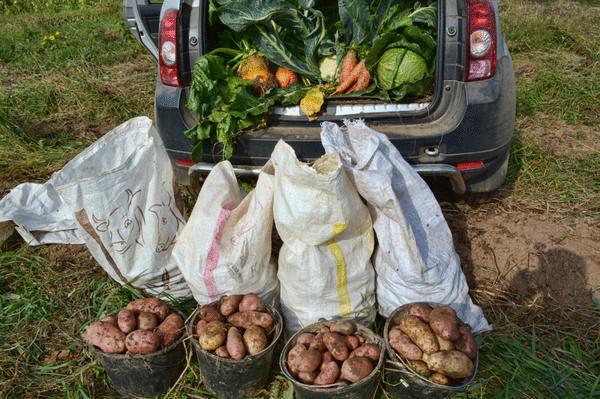
What we get in result? When I say no to drugs containing a single microorganism, in favor of academic hours, with 100,000 species of living beings, I assume that you will receive the following benefits:
1. Protection from disease On the leaves of my plants are always hundreds of species of pathogens that wind recorded from the infected gardens and wait for any stress to cause the outbreak of diseases. Making hundreds of thousands of symbiotic, aerobic plants on the leaves and soil, I know that there will always be aerobic, which will displace pathogens from the food niche (and microfauna will hunt them down and eat) and weaken the infectious background and the risk of disease. I see the improvement in the growth of their plants.
2. The revival of "soil indigestion" In the soil there is always an unoccupied food niches. Organics — in some micro-zones, micro-organisms in others. I can't wait for the macrofauna mix the soil and spread the right microbes in the right place. Spraying the soil academic hours always lead to an outbreak of soil digestion. I see the improvement in the growth of their plants.
3. The optimal diversity of microorganisms Plant their root secretions forms the rhizosphere, but not always in the soil there is an optimum diversity of microorganisms. Academic hours directly gives the plants a huge choice — from which bacteria and fungi form the rhizosphere. Then connected microfauna, and the system predator-victim dramatically improves the nutrition of plants. I see the improvement in the growth of their plants.
4. The release of soil from toxic substances, the soil is saturated with diverse soil biota, particularly microfauna (microceramic) binds accumulated over the past few years pesticides, herbicides and toxic metals. I can fearlessly to tear the fruit from the garden for their grandchildren.
5. Healthy leaves Aerobic, settle down in the sheets not only protect the plant from pathogens, but also provide them with valuable bioactive substances that are absorbed through the stomata. In these plants the stomata are open for longer, which improves air mode, the absorption of carbon dioxide and, as a consequence of photosynthesis. It is proved that the loss of moisture at the same time reduced. Look for healthy green leaves, to get aesthetic pleasure.
5. Improvement of soil properties academic hours, as no other drug quickly makes soil lumpy, porous; micro granules are covered with microbial slime. All this increases water-holding properties of the soil and the ability to absorb atmospheric moisture. The roots of the entire season are in good conditions.
6. The diversity of soil organisms Improve soil structure not only of the humus saprophytes, and above all — Micrography, protozoa and nematodes. In the structural soil increases rapidly not only the number of types of microbes, but the number of functional groups, forming stable food Microsystems.
7. Increase of fertility of the bigger and more diverse biomass from microbes academic hours multiplied is formed in the soil, the faster and better it accumulate in humic substancesand their role in soil fertility is invaluable.
As a result, the system soil – plant is stable, resists stress. Pesticide load on garden decreases.
What else can you use academic hours? Once again, I used academic hours in the following ways:
And will your soil be as fertile as the soil conservation Voronezh black soil or the soil of the island.published
P. S. And remember, only by changing their consumption — together we change the world! ©
Source: www.7dach.ru

Let's start with the theory First, be patient — understand the basics of soil Microbiology, which previously the school did not teach. We will begin to understand practical examples.
How to work EM-the drugs Many have tried to use microbial preparations Baikal EM-1 and "the Shining." I have experience using them in the spring to prepare drugs, sprayed the soil (or rather, mostly — organic, which it mulch).
For what? I understand that the natives of my soil still asleep. They earn by the end of may. And microorganisms are propagated and activated in the preparation of EM products, earn in 3-5 days — will begin to decompose organics and to give nutrition to plants. There will be a new momentum for the processing of organics. Themselves made EM quickly become food for predatory natives, and the wave of food chains will sweep through the area, producing food for the roots of my plants. I'll see how the plants came to life and started to grow.
Delicious cucumbers ripen in June, if you put academic hours:

This is a revival of growth momentum seen by many gardeners, but because buying EM-preparations.
But the momentum lasts long. The plants are constantly well grown, they should be given a new portion of organic matter often stimulate or Baikal EM. This uh-drugs are fundamentally different from academic hours.
How are herbal tinctures Another example. Many have used infusions of herbs. Recently got a recommendation to aerate them, to avoid the putrid smell. I've done that. But with the understanding of the biological processes in the soil.
Weeds contain readily available to soil fungi, and microbes of food — carbohydrates and proteins. We just make weed protein and carbohydrate extraction. The same thing happens if you push a crust of bread or to dissolve the old jam: we make sugar and the microorganisms that rapidly begin to decompose unavailable soil organic matter natives and create impulse food chains — that is, stimulate accelerated decomposition of coarse organic matter available to the roots in the compost.
Unusually roses grow wild, if you spray them academic hours:

What happens in the soil? Another example. More important. If you are from year to year, constantly make rich loose organic carbon in the soil are changing consumers of this material. Changing native flora, appear more active the bacteria are, but not limited to: developing and fungi, amoeba, and nematodes, and algae, followed by earthworms and so on... And these chain of microzine be very stable and user-friendly for cultivated plants.
On such a soil your plants not just consume ready-made food elements, and form a new symbiotic rhizosphere bacteria, friendly bacteria are surrounded by a dense ring of roots and do not allow harmful germs.
I mean, I brought you to the idea: the goal is not to make the soil preparations with microorganisms; our task is to create conditions so that the plants themselves have formed friendly flora.
Potted plants also love feeding academic hours:

The solution of the problem — academic hours So now I don't buy commercial preparations and just take a little bit of soil (organic matter) with the "trash heap" — a heap of old compost, overgrown with weeds. Only old aged compost contains symbiotic bacteria and fungi, amoebas, nematodes, algae need quality and biodiversity.
This compost is placed in water with malt and leak air. All useful local -homegrown, native to my garden beds — flora multiplies millions of times. And immediately before she died, pour it on your garden. Here's biota will definitely take root, will supersede all soil pathogenic fungi and bacteria and enrich the rhizosphere of cultivated plants.
So it turns out academic hours. Aerate the Compost — get the infusion, similar in color to the Tea

How to make good compost In any garden or beside it is the corners where you fold the garbage, and the tops of your plants. There is growing nettle, pigweed and other weeds. If this junk pile there 5 years, there has emerged a natural, rich in its diversity of the microbial community.
Put your bags of manure, or leaves, or cut the weeds; just add the rest of the table — bread, bones; in a pinch, buy some cheap fodder of the bran. This will attract worms from the surrounding soil and your organic matter will be filled with the desired living entities.
How to correct compost to prepare academic hours Now, I will share the more important secrets and tell me how these billions of beneficial microorganisms from the compost translate into a solution, many times to multiply and spill (or spray) them their plants.
Need water without chlorine , for example, bucket 10 liters. Liter bottle compost. On 10 l of water I should add 50-100 grams of molasses, or malt extract (sold in all stores). You can push a few crusts of bread, or add the remnants of jam, you can jam yourself from the waste of red beet. Carbohydrates need to quickly propagate of microbes .
Our beneficial micro-organisms in the compost live in a well-aerated environment. If placed in a solution of malt, they quickly die, rot and be eaten by putrefactive microbes. So as soon as you compost is placed in a solution, you need to immediately start the compressor and allow air. 2 liters of water will fit any aquarium pumps, 10 l is the most powerful of those that are on sale.
So, after we placed the compost into a bucket of water with the malt, and included aeration, microorganisms and various substances (organic and inorganic, soluble and insoluble) fall into water, saturated with oxygen. In these conditions, they begin to actively proliferate , especially those microorganisms which are aerobic (that is, able to live and reproduce in conditions of high oxygen content in the water). Anaerobic microorganisms in such conditions either die or pass into a state of sleep.
Depending on the kind of feed additives (malt, jam or tincture weed grasses) in the infusion begins to develop a certain group of microorganisms. In the process of reproduction they use as a food additive that is actively consuming oxygen. Global experience has shown that if you take just one molasses that reproduce only useful microorganisms, putrefactive all die.
At this stage particularly important to control the content of oxygen in the water. When you disconnect the aeration already after 30 minutes the oxygen level in water decreases so that the mass death of aerobic organisms and anaerobic breeding is highly undesirable for our purposes. In most cases, such solution is not amenable to correction. A spoiled solution can not be used!
On average, at ambient temperature +20 degrees Celsius cycle preparation of microbial infusion lasts about a day (i.e. 24 hours). At a temperature of +30 degree cycle lasts about 15-18 hours. If the process goes too long, the microorganisms run out of nutrients and cease to multiply, with many groups simply disappear, becoming food for other groups.
How to determine whether the preparation of infusion? The drop in the level of oxygen can be easily determined by smell. Good microbial infusion has a pleasant smell of fresh earth. One in which began to proliferate anaerobic microorganisms, becomes unpleasant (rotting) smell.
The infusion must be applied for no more than 4 hours after cooking. The shelf life depends on the ambient temperature: the higher it is, the less is stored the finished product. Given the time needed for delivery to the place of use, sometimes you have to use the infusion directly "from wheels".
This is the difference between its microbial infusion and store EM-preparations. The scale of the garden we may keep alive that we need microorganisms, in industrial settings retain academic hours in expensive aerators. Each microbial infusion made with his own hands, itself is unique – it is something individual, creative; to combine and create as you like.
Indicator of the quality of academic hours — foam and the smell of bread:

As I apply academic hours in the fall garden and the garden I mulched with organic matter obtained from their animals. If from the end of September there are warm days, I sprayed the mulch infusion. But the main thing is to spray all the soil with mulch in early spring, when at the end of April the soil begins to warm up. This you the temperature in the root layer of plants will increase by 5-10 degrees, and spring in your garden will come 2 weeks earlier and fall is 2 weeks later.
Of course, the infusion before pouring into the sprayer it is necessary to filter, but through a large sieveto nematodes and amoebas in the solution was. And so we should not spray the small droplets and grow larger.
The garden and the soil, and the foliage — spray 3-4 times per season. Trying to catch the rain: microbes should penetrate into the soil.The garden, you can spray frequently, up to two times a month.
It is necessary to remember that you make along with the solution is not only effective micro-organisms which will process organic material and make it available for plant nutrition, and more importantly, stimulate the growth of roots and create a very active rhizosphere in the rhizosphere. You help plants engage in symbiosis with microorganisms, symbiotic fungi, by increasing the secretion of carbohydrates by the roots.
Spraying foliage also benefits the plants. The film of microbes-anaerobes protect the leaves from disease, and a huge number of phytohormones-alisation contained in academic hours, dramatically increases their resistance to pests.
Don't forget before use, dilute the infusion with water without bleach. For the leaves, I diluted 10-fold, while the spring tillage — no more than 5-10 times.
Academic hours under the microscope And one idea, without which you will not be able to use academic hours wisely, with understanding why this is necessary.
When I'm in your weak microscope began to study the microcosm in academic hours, we saw that already after 6-8 hours after aeration in a drop academic hours move billions of different species of microbes. By the end of the day in tea appear large, fast moving predators – protozoa, amoeba, nematodes. In the soil these hunters, in contrast to the sedentary bacteria, moving a decent distance.
I understand that if I regularly spray organic good academic hours, in which not only thousands of types of composting bacteria, but also many amoebae, ciliates, nematodes and other microfauna fast moving, then after some time, these predators will eat the available bacteria will be the concentrate of protein and fat and hungry, like the hog in the woods, when you eat all the acorns and go to the field with oats.
Hunger all this fast-moving microfauna hunt for food. And I think there's never gonna be fat ciliates hunters on my garden beds? Hunters are the roots of my plants. But the roots will chase the nimble ciliates, like sundew, which attracts mosquito with their secretions, their secrets will attract bacteria in the rhizosphere of sweet secretions (so hunters pour into the trough oats).
The concentration of bacteria in the zone of the rhizosphere will increase by thousands of times compared to the surrounding soil. All predators: amoebas, ciliates, nematodes – protein concentrates, accumulated from a large area, will aspire to the zone of suction of the roots.
Scientists recently made a brilliant discovery. Predators (amoeba, ciliates, nematodes), eating microbes, secrete a liquid similar in composition to the urine of animals. The roots begin to absorb these secretions, containing salts of nitrogen, amino acids, vitamins and hundreds of other studied and unstudied substances.
So the plants are planted on the soil, shed academic hours enriched "soil of fast moving predators, cease to be poor gatherers inaccessible mineral salts, competing for scarce nitrogen to the soil biota. The roots of my plants are intelligent hunters fat "hogs" – amoebas and ciliates, which bring them directly "in the mouth" accumulated over a large area of the nitrogen is in the form of a more valuable protein.
What I wrote here, scientists, soil microbiologists and ecologists. But it is not known to scientists agronomists. And examples of how clever the roots hunt for food, you can give a lot.
And killed by a plough soil are bacteria and fungi, is always there. But they are few and in number and types. Especially the little mushrooms. Often dominated by pathogens and fungi-parasites. On the contrary, in a compost pile or vermicompost (especially in the unspoilt overgrown garbage heap) of such organisms, thousands of times more not only in quantity but also in quality, by FUNCTIONAL GROUPS; they have developed in a stable ecosystem.
In Mature compost showed no pathogens: they are also organic, and ate them active hungry aerobes and mesofauna. So, making academic hours from the compost on your garden bed, you not only give the plants food, but quickly improve the biodiversity and stability of ecosystems of the soil.
The harvest in the field, processed academic hours does not fit in the car

What we get in result? When I say no to drugs containing a single microorganism, in favor of academic hours, with 100,000 species of living beings, I assume that you will receive the following benefits:
1. Protection from disease On the leaves of my plants are always hundreds of species of pathogens that wind recorded from the infected gardens and wait for any stress to cause the outbreak of diseases. Making hundreds of thousands of symbiotic, aerobic plants on the leaves and soil, I know that there will always be aerobic, which will displace pathogens from the food niche (and microfauna will hunt them down and eat) and weaken the infectious background and the risk of disease. I see the improvement in the growth of their plants.
2. The revival of "soil indigestion" In the soil there is always an unoccupied food niches. Organics — in some micro-zones, micro-organisms in others. I can't wait for the macrofauna mix the soil and spread the right microbes in the right place. Spraying the soil academic hours always lead to an outbreak of soil digestion. I see the improvement in the growth of their plants.
3. The optimal diversity of microorganisms Plant their root secretions forms the rhizosphere, but not always in the soil there is an optimum diversity of microorganisms. Academic hours directly gives the plants a huge choice — from which bacteria and fungi form the rhizosphere. Then connected microfauna, and the system predator-victim dramatically improves the nutrition of plants. I see the improvement in the growth of their plants.
4. The release of soil from toxic substances, the soil is saturated with diverse soil biota, particularly microfauna (microceramic) binds accumulated over the past few years pesticides, herbicides and toxic metals. I can fearlessly to tear the fruit from the garden for their grandchildren.
5. Healthy leaves Aerobic, settle down in the sheets not only protect the plant from pathogens, but also provide them with valuable bioactive substances that are absorbed through the stomata. In these plants the stomata are open for longer, which improves air mode, the absorption of carbon dioxide and, as a consequence of photosynthesis. It is proved that the loss of moisture at the same time reduced. Look for healthy green leaves, to get aesthetic pleasure.
5. Improvement of soil properties academic hours, as no other drug quickly makes soil lumpy, porous; micro granules are covered with microbial slime. All this increases water-holding properties of the soil and the ability to absorb atmospheric moisture. The roots of the entire season are in good conditions.
6. The diversity of soil organisms Improve soil structure not only of the humus saprophytes, and above all — Micrography, protozoa and nematodes. In the structural soil increases rapidly not only the number of types of microbes, but the number of functional groups, forming stable food Microsystems.
7. Increase of fertility of the bigger and more diverse biomass from microbes academic hours multiplied is formed in the soil, the faster and better it accumulate in humic substancesand their role in soil fertility is invaluable.
As a result, the system soil – plant is stable, resists stress. Pesticide load on garden decreases.
What else can you use academic hours? Once again, I used academic hours in the following ways:
- seeds are saturated with beneficial microorganisms and disinfected from harmful; seeds of tomatoes, peppers, watermelons and other crops are placed in a gauze bag and lowered into boiling tea for 12-24 hours. A more effective stimulation and disinfection I don't know. Get with Neklinovskiy the shoots;
- tea watered the soil after planting the seeds and watering the seedlingsafter transplanting — germination rate and the survival rate gorgeous;
- if the first spring spraying of soil I can walk and EM-preparations (it's a start for the beginning of food chains), the next is best done academic hours; once in 2 weeks, 2 times per season, each gardener their cultures, its soil, its possibilities.
And will your soil be as fertile as the soil conservation Voronezh black soil or the soil of the island.published
P. S. And remember, only by changing their consumption — together we change the world! ©
Source: www.7dach.ru
By 2018, Tesla will release 4 new models of electric vehicles
Dormant for 26 years, a black hole came into play

